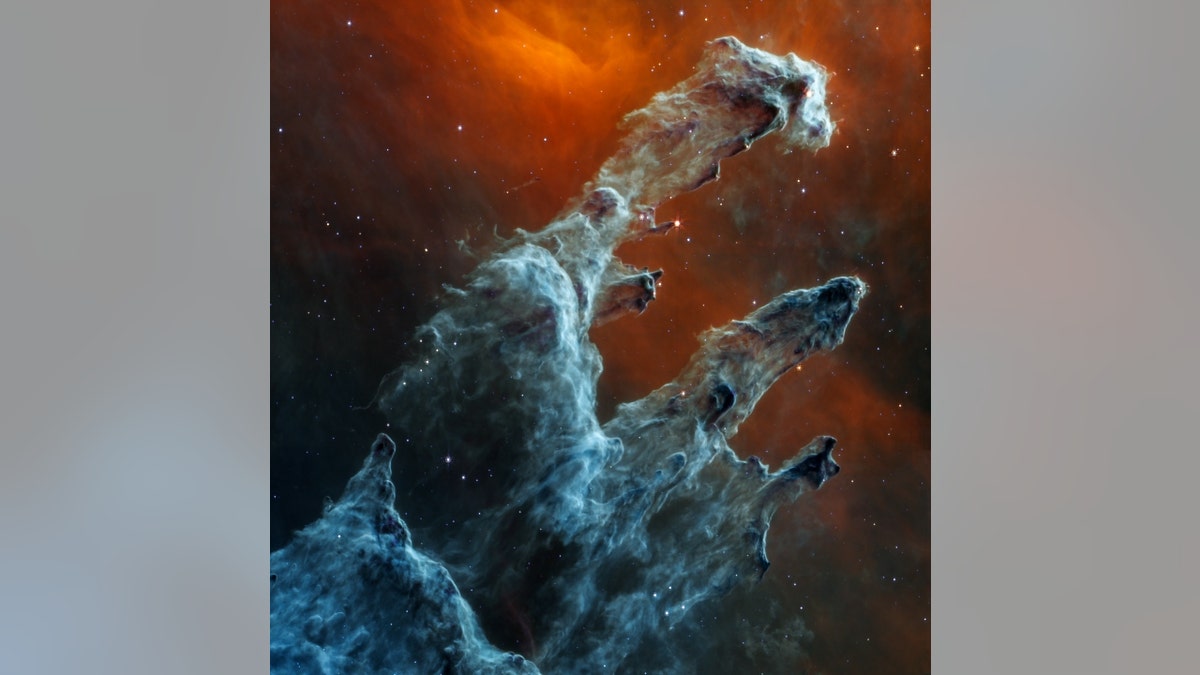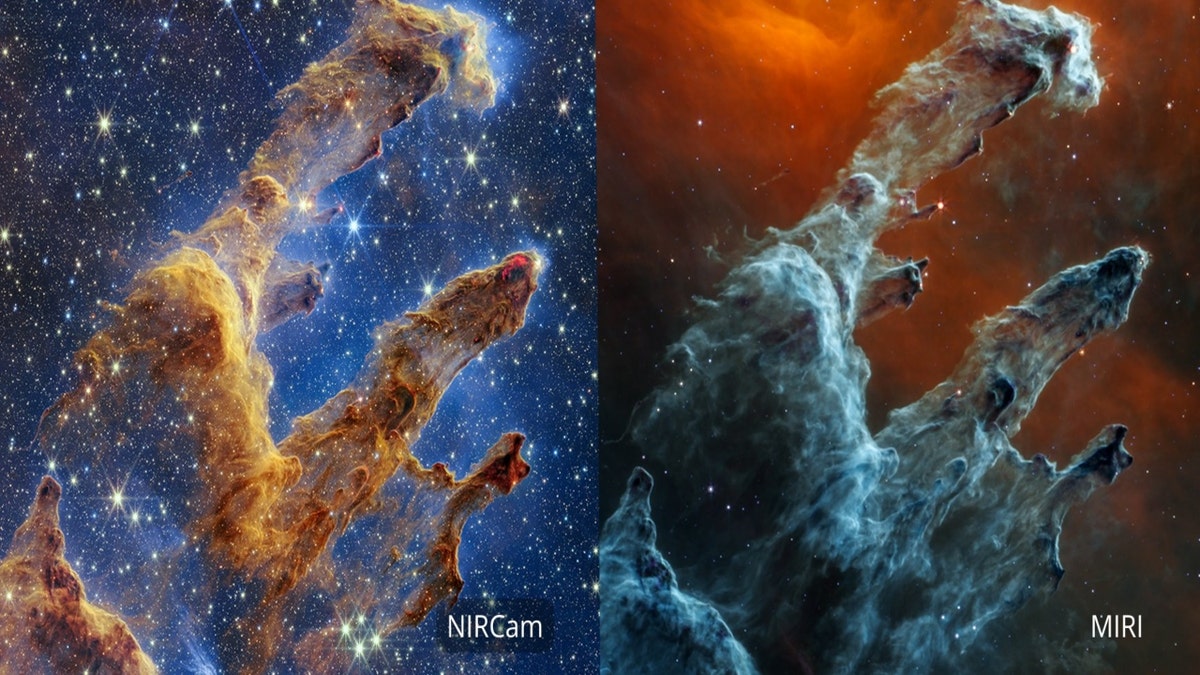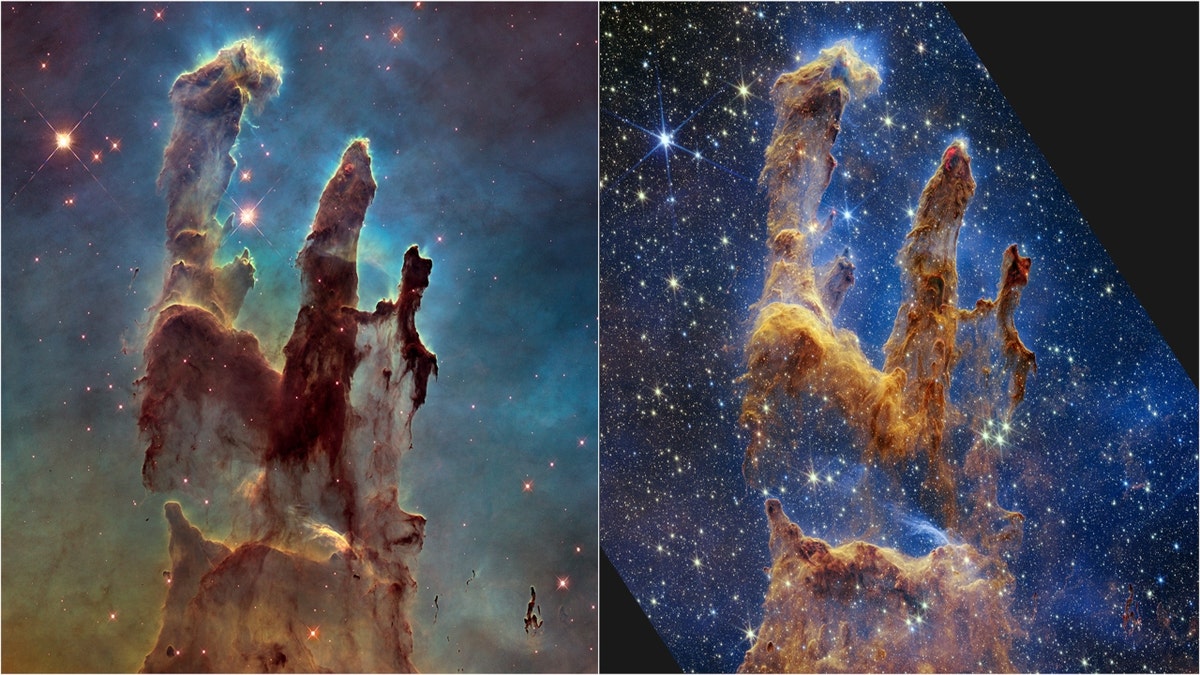Webb Space Telescope allows us to 'look into the past': Theoretical physicist
Theoretical physicist Dr. Michio Kaku explains the significance of new images provided by NASA's Webb Space Telescope on 'Sunday Night in America.'
The James Webb Space Telescope has released a spooky new photo of the iconic Pillars of Creation.
In a Thursday release, NASA wrote that the eerie image was taken by the $10 billion-dollar observatory's Mid-Infrared Instrument, also known as MIRI.
The pillars of gas and Interstellar dust enshroud the thousands of stars that exist in the region.
Stars typically do not emit much mid-infrared light and many newly-formed stars are no longer surrounded by enough dust to be detected in mid-infrared light.
WEBB SPACE TELESCOPE OFFERS RARE LOOK INTO EARLY UNIVERSE
Mid-infrared light excels at examining gas and dust in detail.

NASA’s James Webb Space Telescope’s mid-infrared view of the Pillars of Creation strikes a chilling tone. Thousands of stars that exist in this region seem to disappear, since stars typically do not emit much mid-infrared light, and seemingly endless layers of gas and dust become the centerpiece. The detection of dust by Webb’s Mid-Infrared Instrument (MIRI) is extremely important – dust is a major ingredient for star formation. (Credits: NASA, ESA, CSA, STScI; Joseph DePasquale (STScI), Alyssa Pagan (STScI))
Dust, however, is a major ingredient for star formation and – although the stars aren't bright enough at these wavelengths to appear – it gleams at the edges.
In addition, MIRI observes younger stars that have not yet removed their dusty cloaks, seen as crimson orbs.
The blue stars are aging and have shed most layers of gas and dust.

NASA’s James Webb Space Telescope’s mid-infrared view of the Pillars of Creation (Credits: NASA, ESA, CSA, STScI; Joseph DePasquale (STScI), Alyssa Pagan (STScI))
WEBB TELESCOPE CAPTURES STUNNING IMAGE OF PILLARS OF CREATION
The Pillars of Creation have formed over many millennia.

NASA's Hubble Space Telescope made the Pillars of Creation famous with its first image in 1995, but revisited the scene in 2014 to reveal a sharper, wider view in visible light, shown above at left. A new, near-infrared-light view from NASA’s James Webb Space Telescope, at right, helps us peer through more of the dust in this star-forming region. The thick, dusty brown pillars are no longer as opaque and many more red stars that are still forming come into view. (Credits: NASA, ESA, CSA, STScI; Joseph DePasquale (STScI), Anton M. Koekemoer (STScI), Alyssa Pagan (STScI).)
Conversely, in the Near-Infrared Camera (NIRCam) image of the pillars, stars fill the screen.
The Eagle Nebula landscape, some 6,500 light-years away, was first captured by NASA's Hubble Space Telescope in 1995 and revisited in 2014.
CLICK HERE TO GET THE FOX NEWS APP
Notably, the bright red star sticking out of the topmost pillar's southeastern edge, are larger than the size of our entire solar system.






















